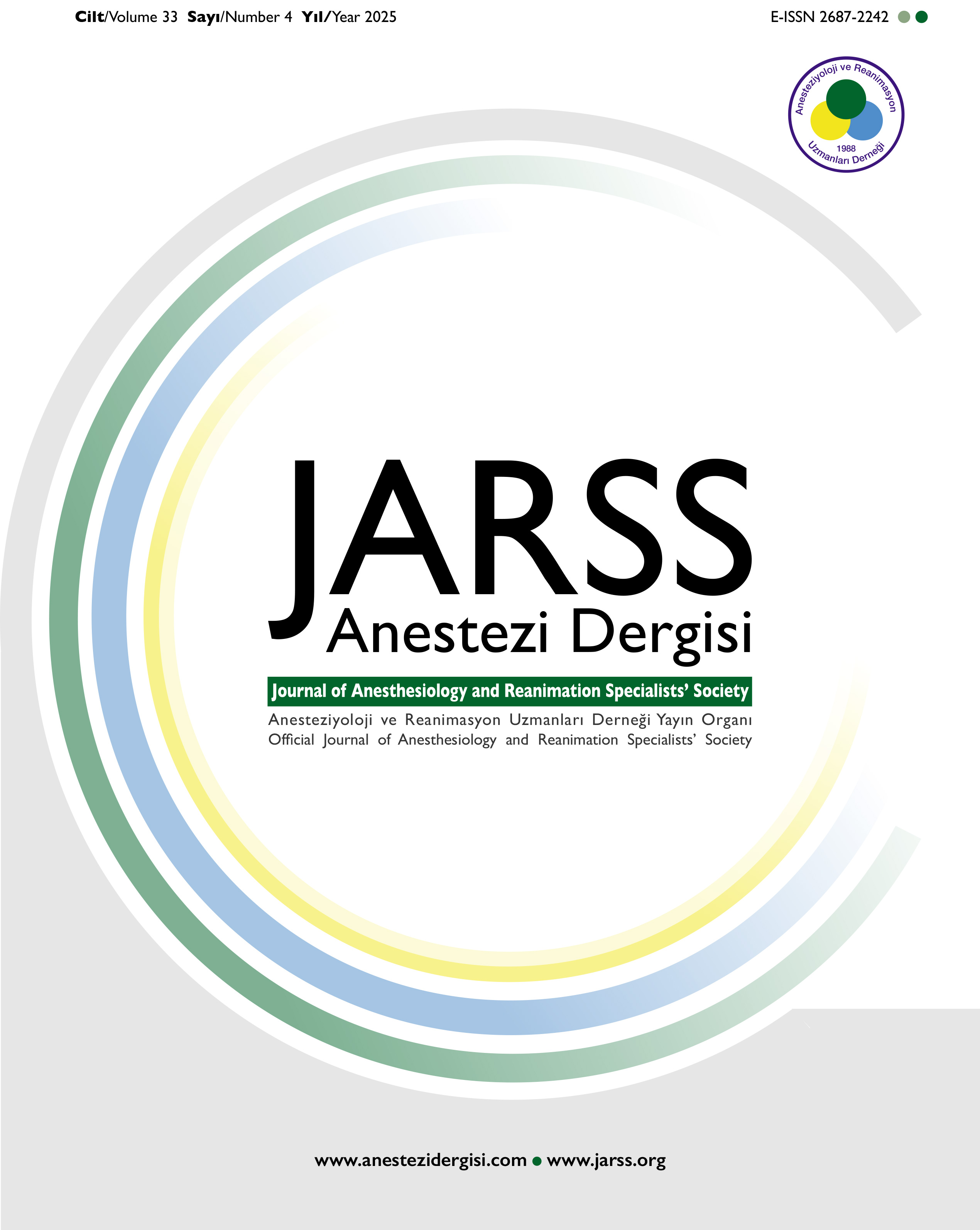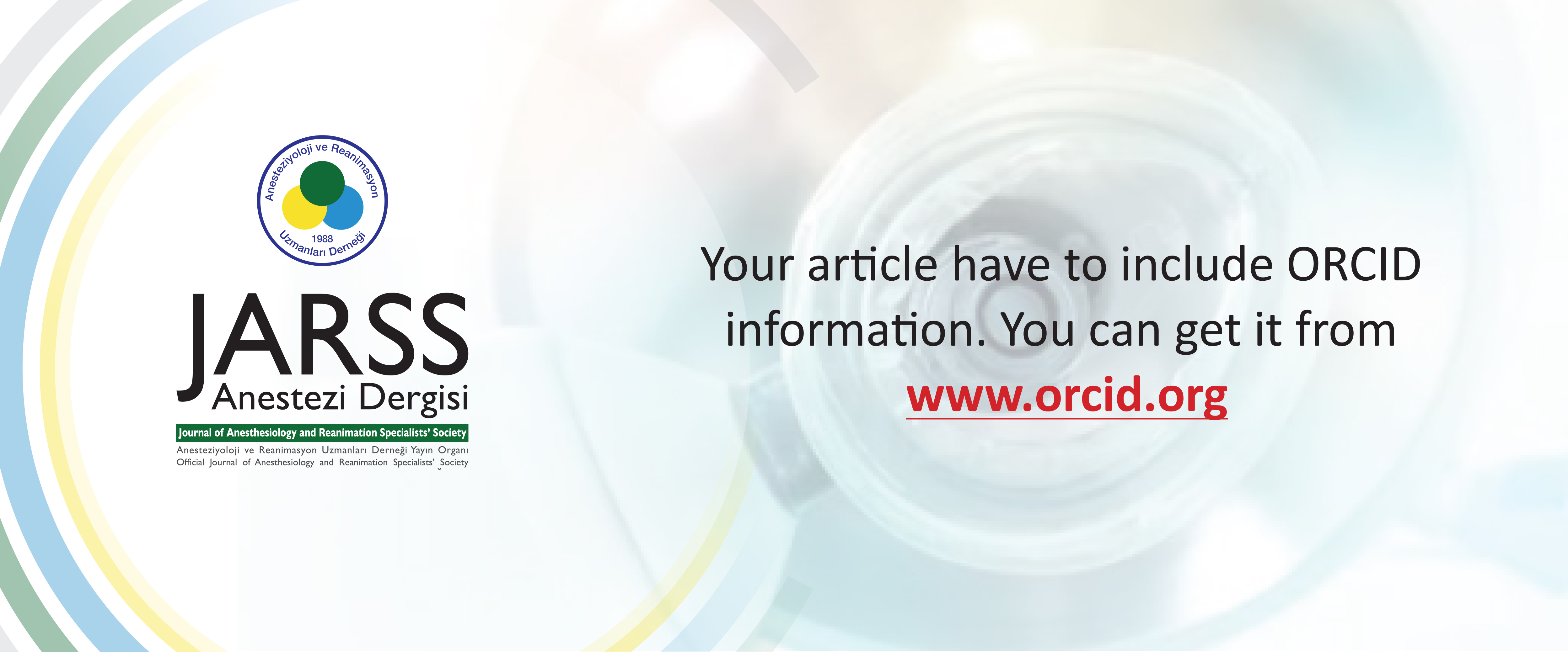Referee and Evaluation Process
The decision about the publication of all articles to be published in the journal belongs to the editorial board and the chief editor. However, the editors shape their decisions in line with the recommendations of the referees.
The double-blind peer-review process is a completely anonymous evaluation of the study. In this system, only the editor is the person who knows every step. Only the editor is aware of every stage in this system. Neither the authors nor the referees have any knowledge of who will be evaluating their work. As a result, the referees will not be biased in their evaluation of the study. Furthermore, because the author is unaware of the referees, the idea of contacting and influencing them in different ways is ruled out. From this perspective, the double-blind refereeing method is supposed to give unbiased review and enhance equality of opportunity.
For these reasons, all studies submitted to the Journal of Anesthesiology and Reanimation Specialists' Society (JARSS) are subject to double-blind peer-review. At least two reviewers who are specialists in their disciplines evaluate each work that is to be sent. The editors make every attempt to assess the articles as promptly as possible. The editor has final decision-making authority in article evaluation processes.
First Evaluation
The journal publication secretary examines the studies uploaded to the system according to the compliance with the journal's writing rules. Title, short title, author names, institution names, ORCID numbers, subsections and subheadings, references, tables and figures are examined. At this point, the authors may be requested to complete the identified deficiencies.
Preliminary Evaluation Process
Submitted studies are reviewed by the editorial board according to their suitability for the purpose and scope of the journal, and their compliance with the publication policy. The editorial board evaluates submitted papers for suitability for the journal's goal and scope, as well as adherence with the publication policy. The evaluation is done scientifically and based on English/Turkish language proficiency. Articles that are determined to be unsuitable as a result of this evaluation are returned to the author. The peer-review procedure includes the publications that were found acceptable.
Reviewers’ Evaluation Process
The editorial board selects at least two referees who have current studies in the relevant field and are experts in the subject based on the content of the publications. The referees should examine and report on the study within 30 days.
Reports of the Reviewers
The referees evaluate the article in terms of scientific relevance, purpose, materials and methods, results and discussion. The article can either be accepted directly, rejected, or it can be returned for revisions. If correction is requested, the authors are notified of the referees' suggestions and asked to rearrange their work. The referees review the authors' corrections again, and the outcome of the evaluation is reported to the editor. If the appointed referees cannot agree, the article is forwarded to a different referee.
The authors should mark the changes they have made on the main text when submitting the corrected files of their articles, and they should also send their notes on the referees' suggestions in the "Reply to the Referees" file. The author's response should be placed after each referee's comment in the Reply to Referees file, along with the line numbers where the changes were made. Corrected articles should be sent to the journal within 30 days following the decision letter.
Statistical Analysis
Manuscripts deemed appropriate for publication by the reviewers are sent to the statistical editor. Articles that are approved by the statistical editor are accepted for publication.
Plagiarism Policy
A team of experts conducts plagiarism checks for articles in our journal. The prepared plagiarism report is forwarded to the study's relevant editor. The editorial board may ask the author to correct the errors in the article and resubmit or reject according to the report. After this stage, the editor-in-chief should decide whether to accept the study for publication in the journal.
Process of Publication
Ready-to-print PDF files of accepted articles are sent to the responsible authors and publication approvals are requested to be sent to the journal within 2 days. Clinical studies or experimental research articles approved for publication are usually included in the first issue to be published. Case report articles can wait 6-9 months depending on the density.
















